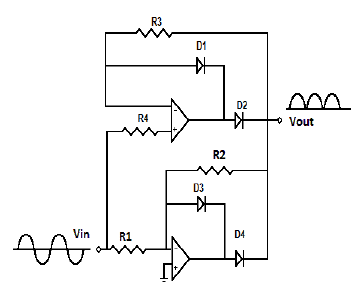I am trying to connect a tacho that is fitted on a DC motor to an MCU / FPGA. It is being used to provide speed feedback of the DC motor.
At full speed the tacho generates around 5.5Vdc which is converted with an ADC before being connected to the MCU / FPGA. As this task requires the motor to go in both directions the tacho also generates negative voltages.
If the voltage was negative only it is easy to convert it with an inverting op amp setup.
Is there a circuit that can convert the 0 to -5.5Vdc to an equivalent positive voltage and leave the positive generated voltage unchanged?


